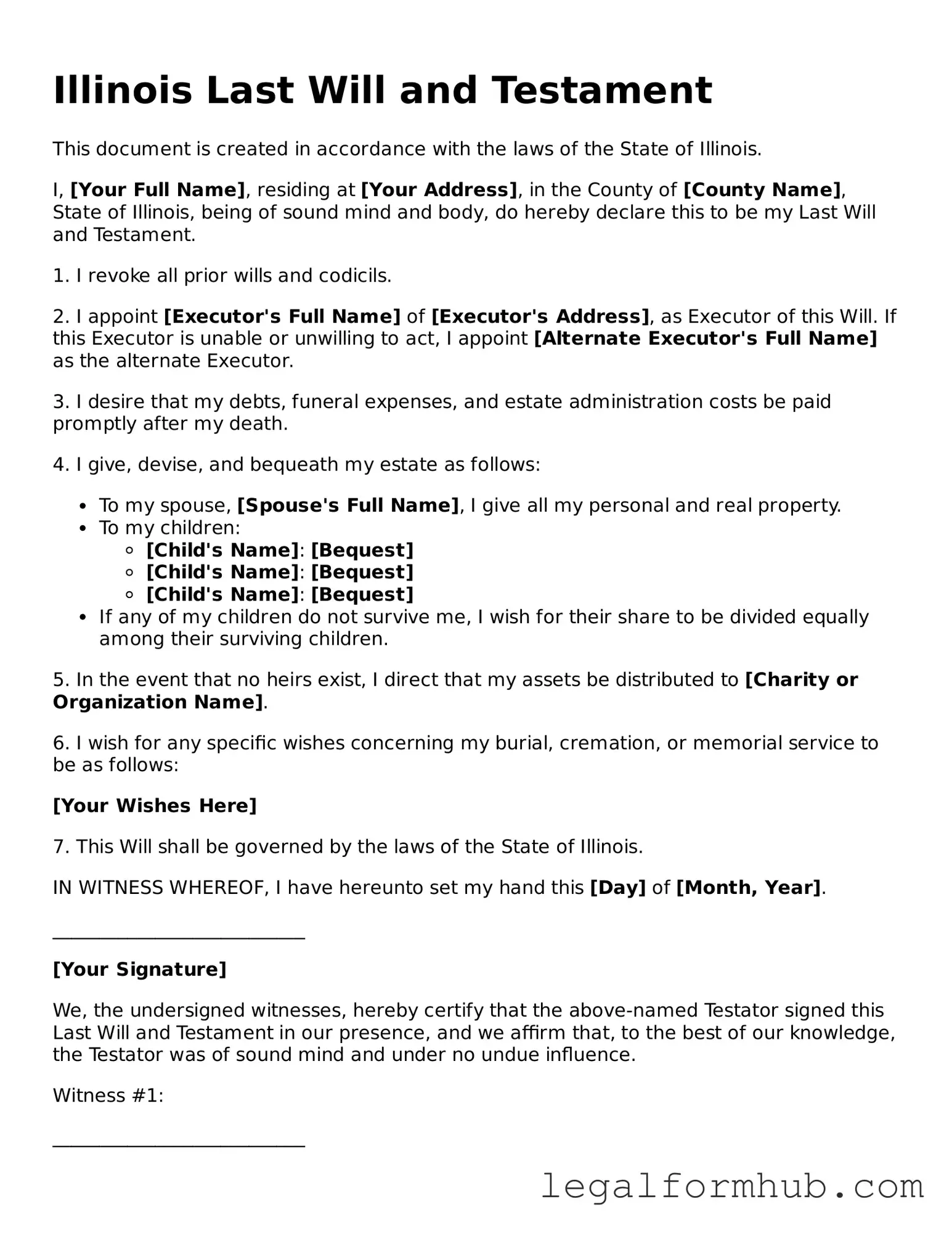The Illinois Last Will and Testament form is similar to a Living Will. A Living Will outlines an individual's preferences regarding medical treatment in situations where they cannot communicate their wishes. Both documents express personal desires, but while a Last Will manages the distribution of assets after death, a Living Will addresses healthcare decisions during life.
Another document akin to the Illinois Last Will and Testament is the Trust. A Trust can hold assets for beneficiaries, often allowing for more control over how and when those assets are distributed. While a Last Will takes effect after death, a Trust can be active during a person's lifetime, providing flexibility in asset management.
Understanding various legal documents is essential for effective estate planning and personal management. For instance, individuals may find themselves needing to claim disability benefits, and the Fill PDF Forms provides an accessible solution for filling out necessary forms like the EDD DE 2501, which enables proper communication of one's medical condition and enables access to financial support when needed. Just like a Living Will or Last Will ensures that an individual's choices are respected, filling out these forms with care ensures that rights and benefits are effectively managed.
The Power of Attorney is also comparable. This document designates an individual to make financial or healthcare decisions on someone else's behalf. Both a Power of Attorney and a Last Will ensure that a person's wishes are respected, though they operate in different contexts—one during life and the other after death.
A Codicil is a document that modifies an existing Last Will and Testament. It allows individuals to make changes without drafting an entirely new will. This is similar in purpose to the Last Will, as both serve to express a person's final wishes regarding their estate.
The Illinois Declaration of Guardian form shares similarities with a Last Will in that both documents can address the care of dependents. A Declaration of Guardian specifies who should take care of minor children if both parents pass away, while a Last Will designates how assets should be distributed after death.
The Revocable Living Trust is another document that bears resemblance. Like a Last Will, it can dictate how assets are distributed upon death. However, a Revocable Living Trust can be altered during the grantor's lifetime and can help avoid probate, offering a different approach to estate planning.
A Bill of Sale is somewhat similar in that it documents the transfer of ownership of personal property. While a Last Will deals with the distribution of assets after death, a Bill of Sale facilitates the sale or transfer of property during a person's lifetime, ensuring clear ownership records.
The Advance Healthcare Directive is related as it combines elements of both a Living Will and a Power of Attorney. It provides guidance on medical decisions and appoints someone to make those decisions if the individual is unable to do so. Both documents reflect a person's wishes regarding health and care.
The Affidavit of Heirship is another document that can be compared to a Last Will. It serves to establish the heirs of a deceased person when no will exists. While a Last Will clearly outlines the distribution of assets, an Affidavit of Heirship can help settle estates without a formal will, ensuring that heirs are recognized.
Lastly, the Estate Plan is a broader document that encompasses various legal instruments, including a Last Will. An Estate Plan outlines how a person's assets will be managed and distributed, addressing not only the distribution of property but also tax considerations and other personal wishes, thus encompassing the goals of a Last Will and Testament.
